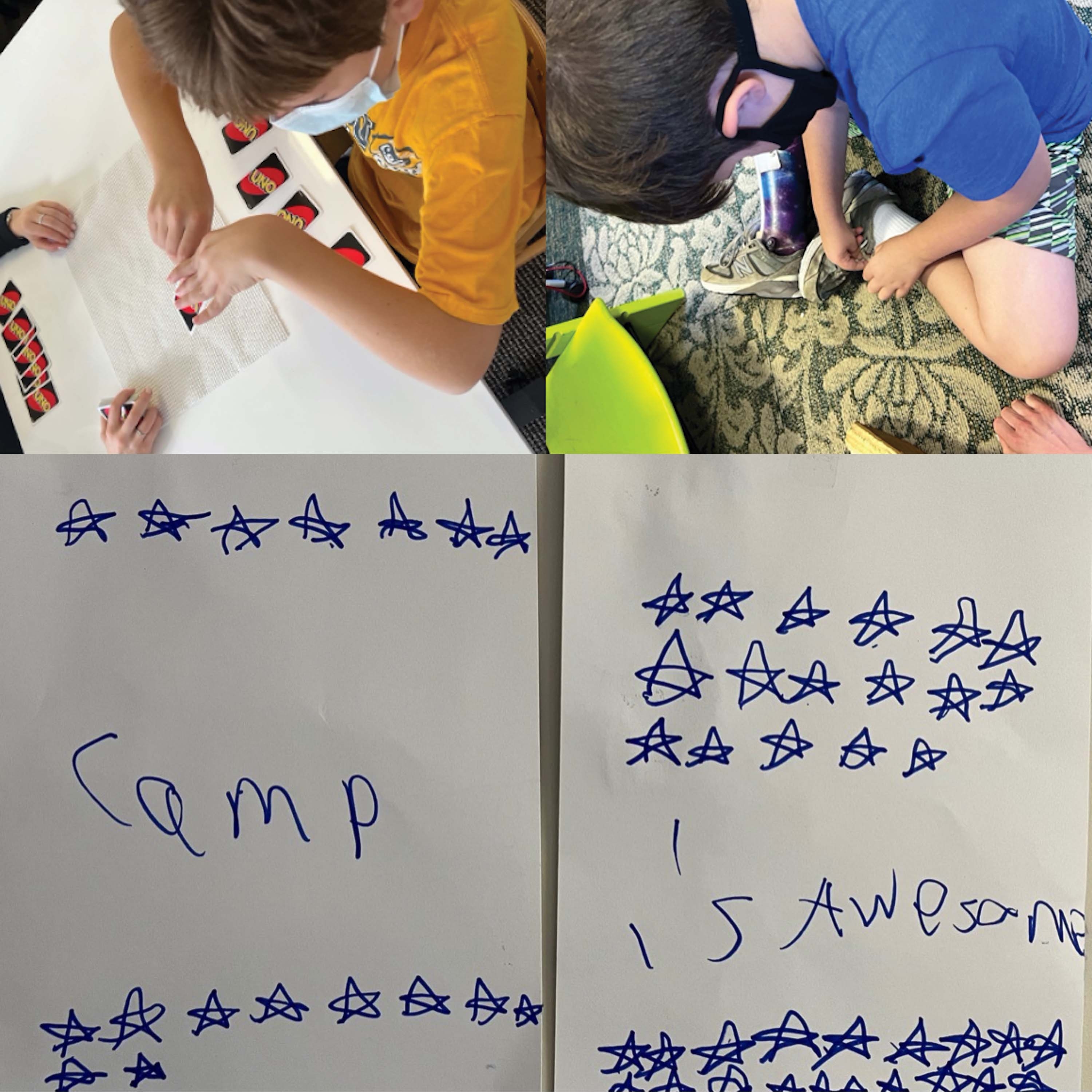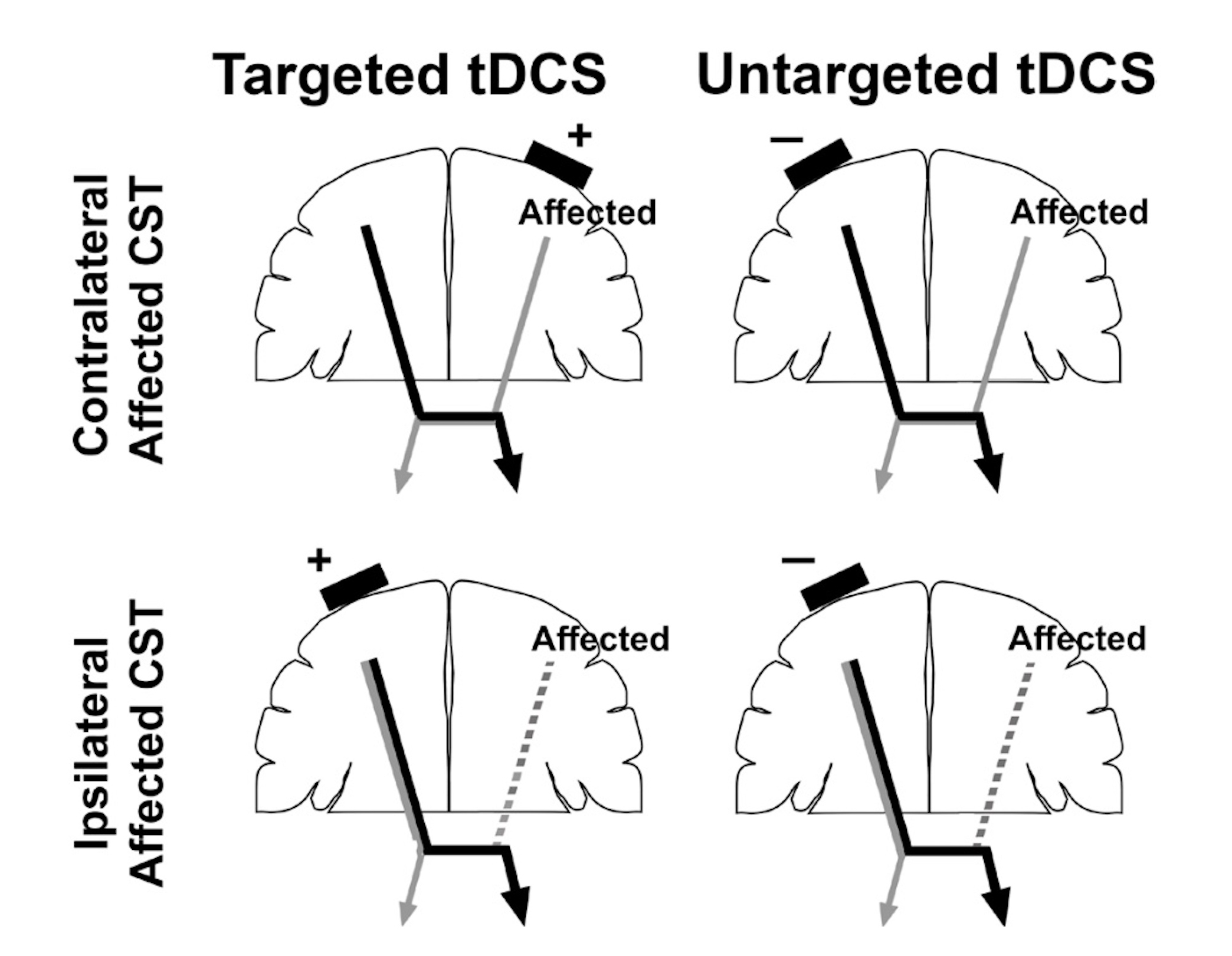You are here
Clinical Laboratory for Early Brain Injury Recovery
We aim to improve hand function in children and adults living with cerebral palsy (CP). Our research focuses on the importance of motor activity in neurorehabilitation. We engage people living with CP in intensive hand therapies, using intensive play-based therapy or robotic therapy.
We use non-invasive brain stimulation to study how intensive hand therapy changes motor circuits in the brain. By better understanding brain structure and function in children and adults living with CP, it is hoped that we will be able to devise novel therapies for people living with CP. We also study factors that contribute to motor impairments such as sensory impairment and visual neglect.

Figure 1: Children with cerebral palsy practicing bimanual skills during our tDCS intervention "camp" in June 2022.

Figure 2: CST connectivity patterns and tDCS montages. Top row: CST connectivity is maintained from lesioned hemisphere to affected hand. Targeted tDCS: anode placed over motor map of affected UE in affected hemisphere. Untargeted tDCS: cathode placed over less- affected hemisphere. Bottom row: CST connectivity is lost from lesioned hemisphere, and shifted to the ipsilateral hemisphere. Targeted tDCS: anode placed over motor map of affected UE in less affected hemisphere. Untargeted tDCS: cathode placed over less affected hemisphere. For all tDCS montages, the second electrode will be placed on the forehead contralateral to the first electrode. CST, corticospinal tract; tDCS, transcranial direct current stimulation; UE, upper extremity.

